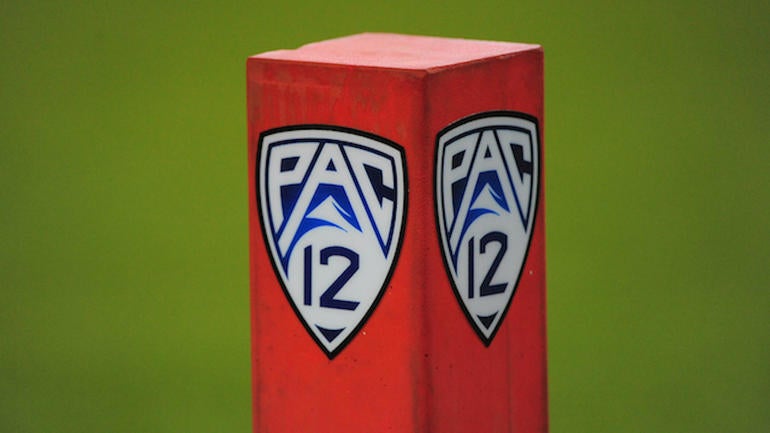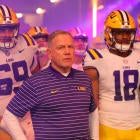
Pac-12 commissioner George Kliavkoff presented potential media rights deals to leaders from member institutions at a Tuesday meeting, though ultimately, no agreement was reached within the league, sources confirm to CBS Sports. Another meeting is planned soon with both sides remaining hopeful deal can be agreed upon.
The primary package proposed was streaming-centric through Apple; it includes incentivization in tears with a significant upside for Pac-12 teams if certain subscription numbers are met, sources told Dodd. ESPN, which first reported the Apple deal, further noted that "several options" were provided to league members with the Apple option being the best of the bunch.
The Pac-12's current media rights deal with ESPN and Fox expires at the conclusion of the upcoming athletic season. Any new agreement would begin in 2024-25.
Some believe the Pac-12's offer from Apple stands at $20 million annually per school as a baseline. If accepted, Pac-12 programs would earn more than $10 million less per year than their Big 12 counterparts. However, incentives could reportedly bump the annual payouts to be competitive with those earned by Big 12 and ACC teams as part of their respective deals.
The formal presentation came five days after Colorado abruptly decided to leave for its former home, the Big 12, amid uncertainty surrounding the Pac-12 and its media rights future. With the Big 12 adding Colorado and Kliavkoff's top deal not appearing to be financially lucrative enough for other teams in the league, Arizona, Arizona State and Utah are now pondering similar moves to the Big 12.
The Pac-12 authorized Kliavkoff to begin negotiations for a new television contract in June 2022 after USC and UCLA announced plans to join the Big Ten in July 2024. Despite more than a year passing, the league had not presented a firm media rights deal to its member schools until Tuesday.
In the end, the Pac-12 became the first Power Five league in the realignment era (since 1992) that wasn't necessarily needed by a major linear carrier. The jump to streaming would be the Pac-12 betting on an entire platform.
At the estimated $20 million per school figure, industry sources indicate it might be wiser for the Pac-12 to take that number from a linear partner in a shorter-term deal that would give the conference more reach and flexibility. Whether such an offer is even possible is not known.
The economics of an Apple deal would seemingly put the Pac-12 in a pay-for-play model. Apple would be using the Pac-12 to push subscriptions to Apple TV+ in a still-nascent industry.
If the Pac-12 was an added $15 package to the base Apple TV+ platform, one industry source said the streamer would need a million new subscribers for the deal to make sense. The "incentive" part of the offer means Pac-12 schools would earn more annually as the league passes various subscription thresholds.
Compare that to other sports streaming properties (rough estimates listed below via industry insiders): MLB.tv has approximately two million subscribers with all MLB out-of-market games are available for annual fee of $94.99. MLS's new deal with Apple has drawn about 700,000 subscribers, but approximately a third of those get general access to the streaming service amid promotional deals. MLS Season Pass costs $99 per year or $14.99 per month.
A bigger consideration for the Pac-12: Apple TV+ is responsible for 1% of all video minutes consumed against all platforms. By comparison, Amazon Prime Video is at 3% and Netflix is at 8%.
Combined, the direct-to-consumer market accounts for only 52% of video minutes consumed. That's the challenge that one day will tip in favor of streaming -- just not now. Ratings declined for "Thursday Night Football" on Amazon as the 2022 NFL season progressed. However, Amazon was able to connect with the key demographic under the age of 50. That's good because the NFL tends to skew towards an older audience.
The Pac-12 is presently the only Power Five conference not locked into a deal through at least 2031.





















